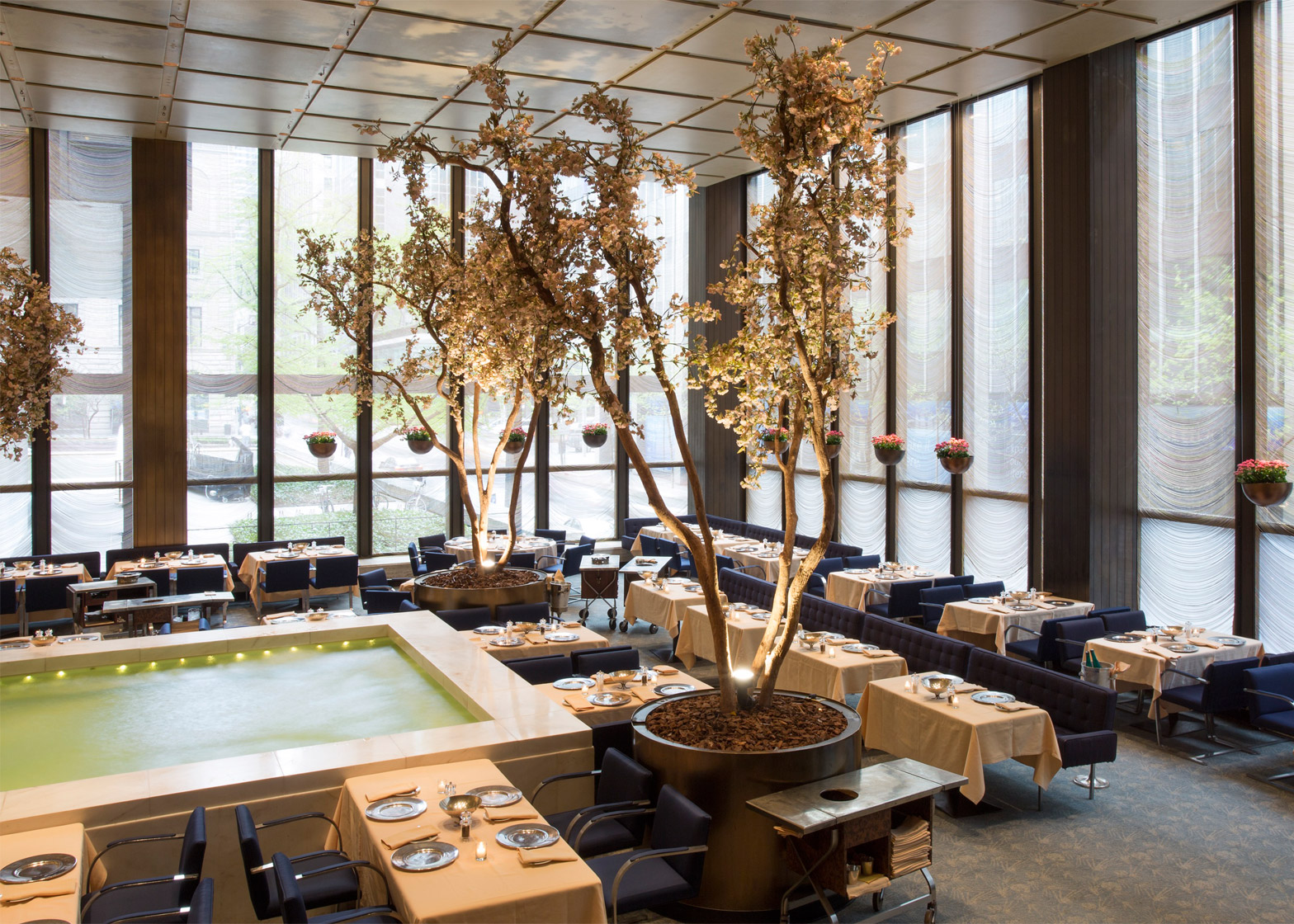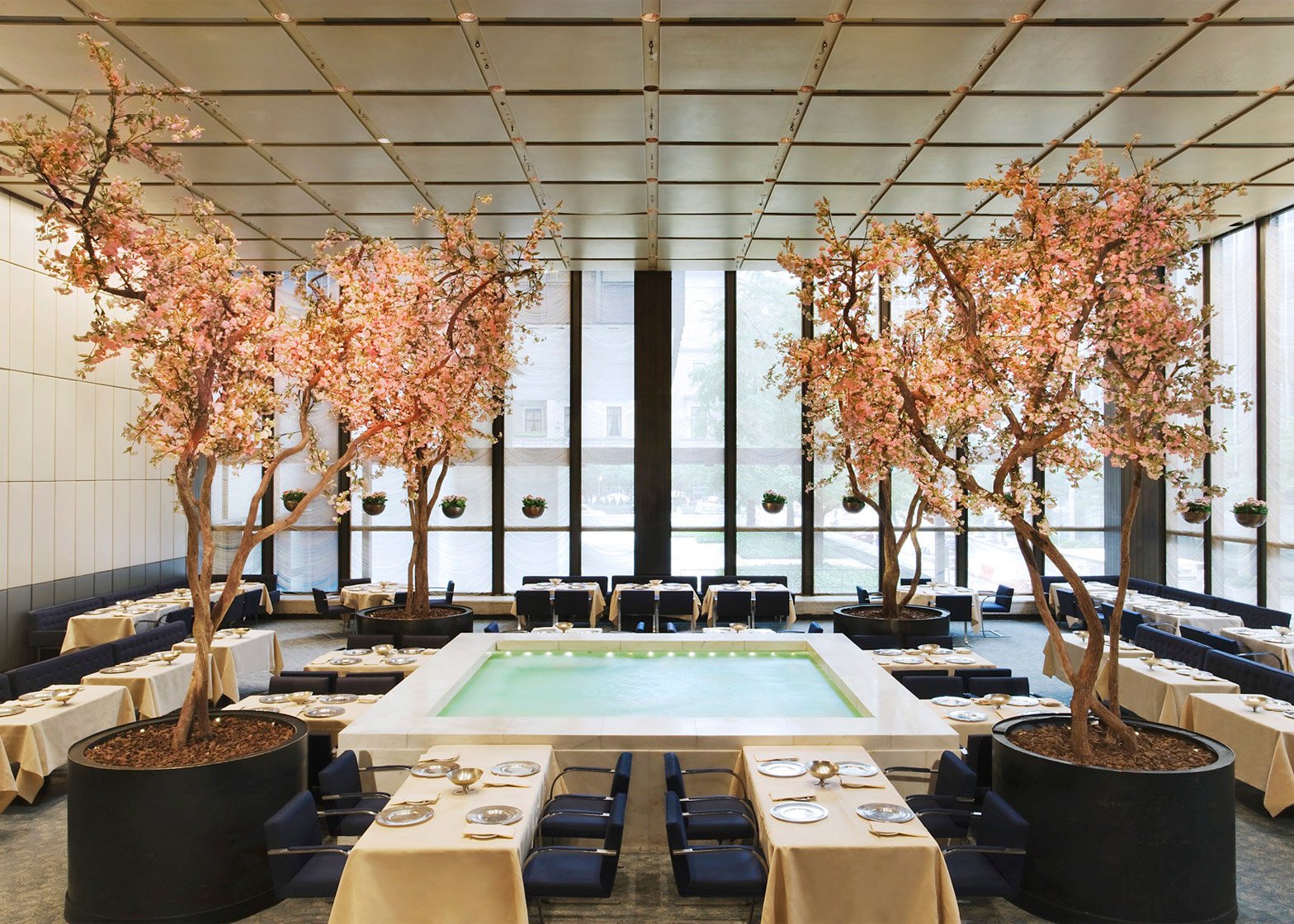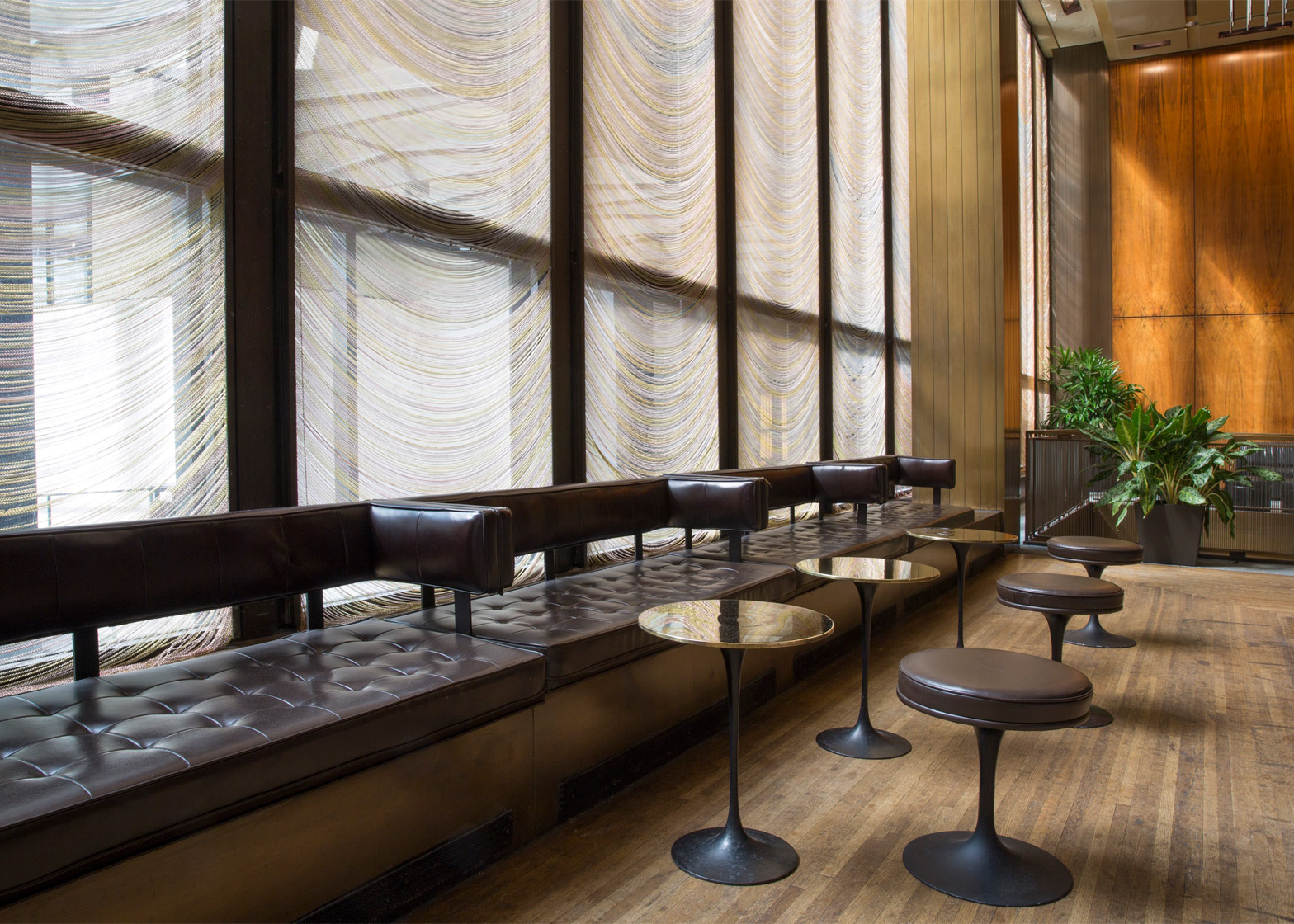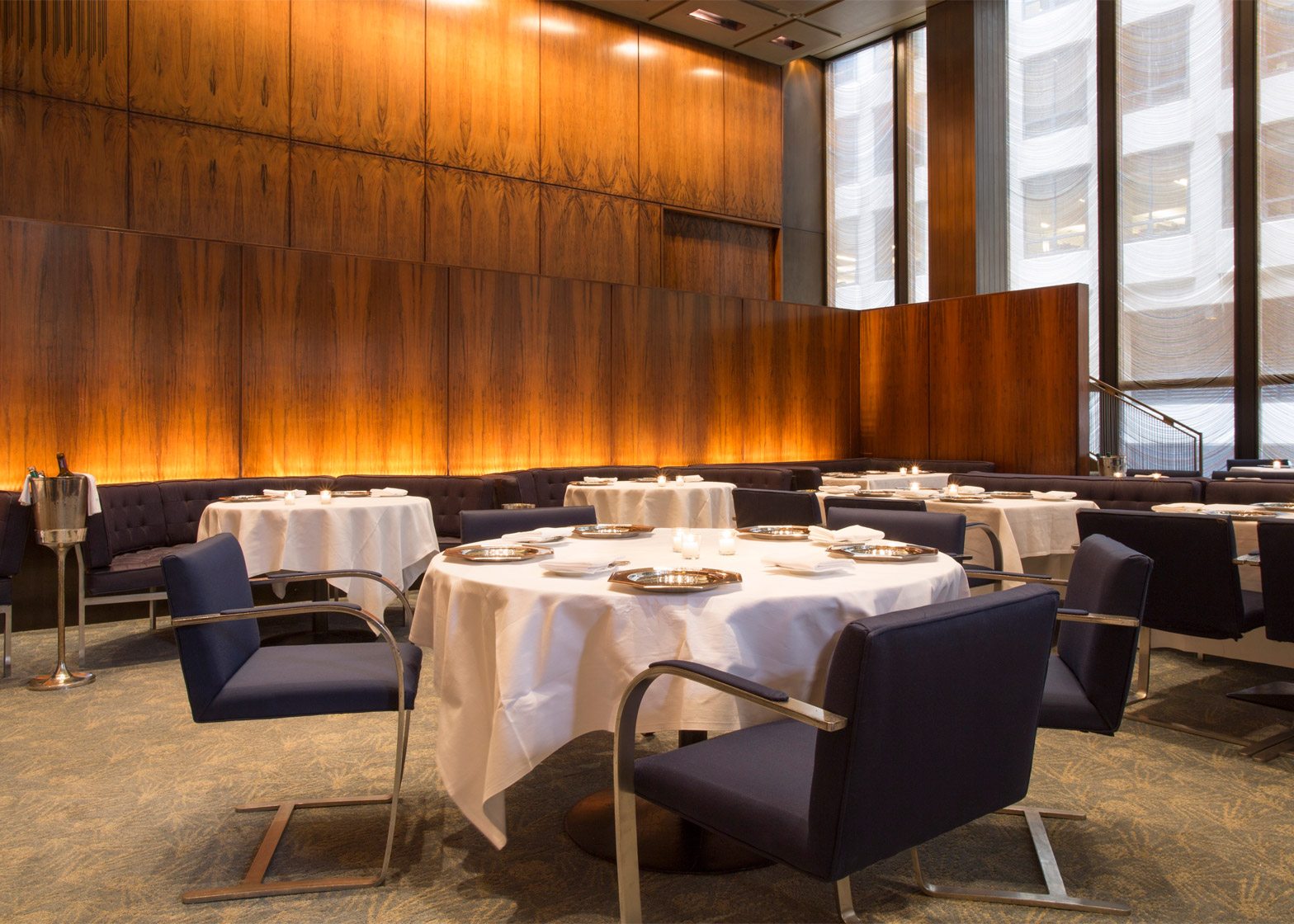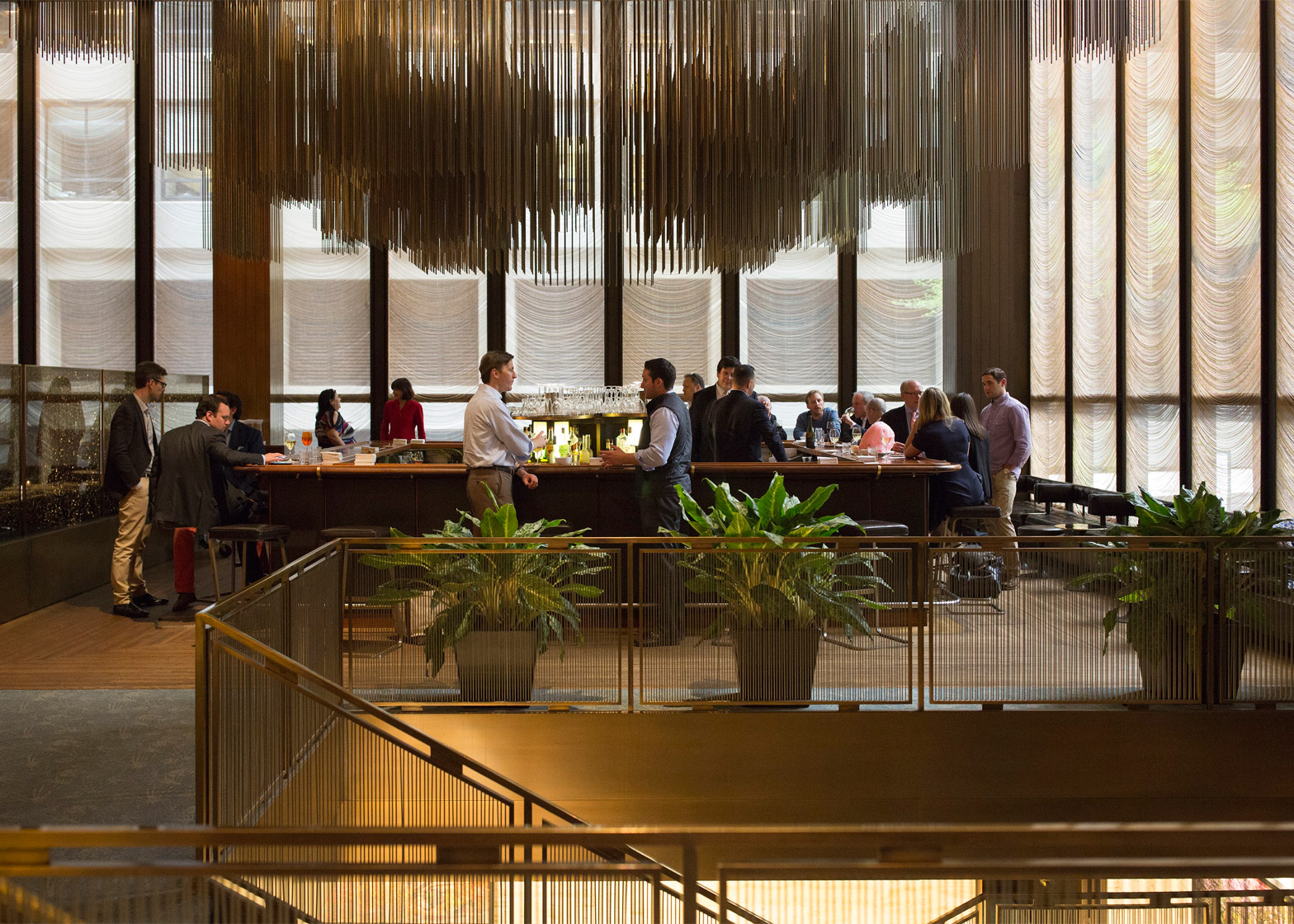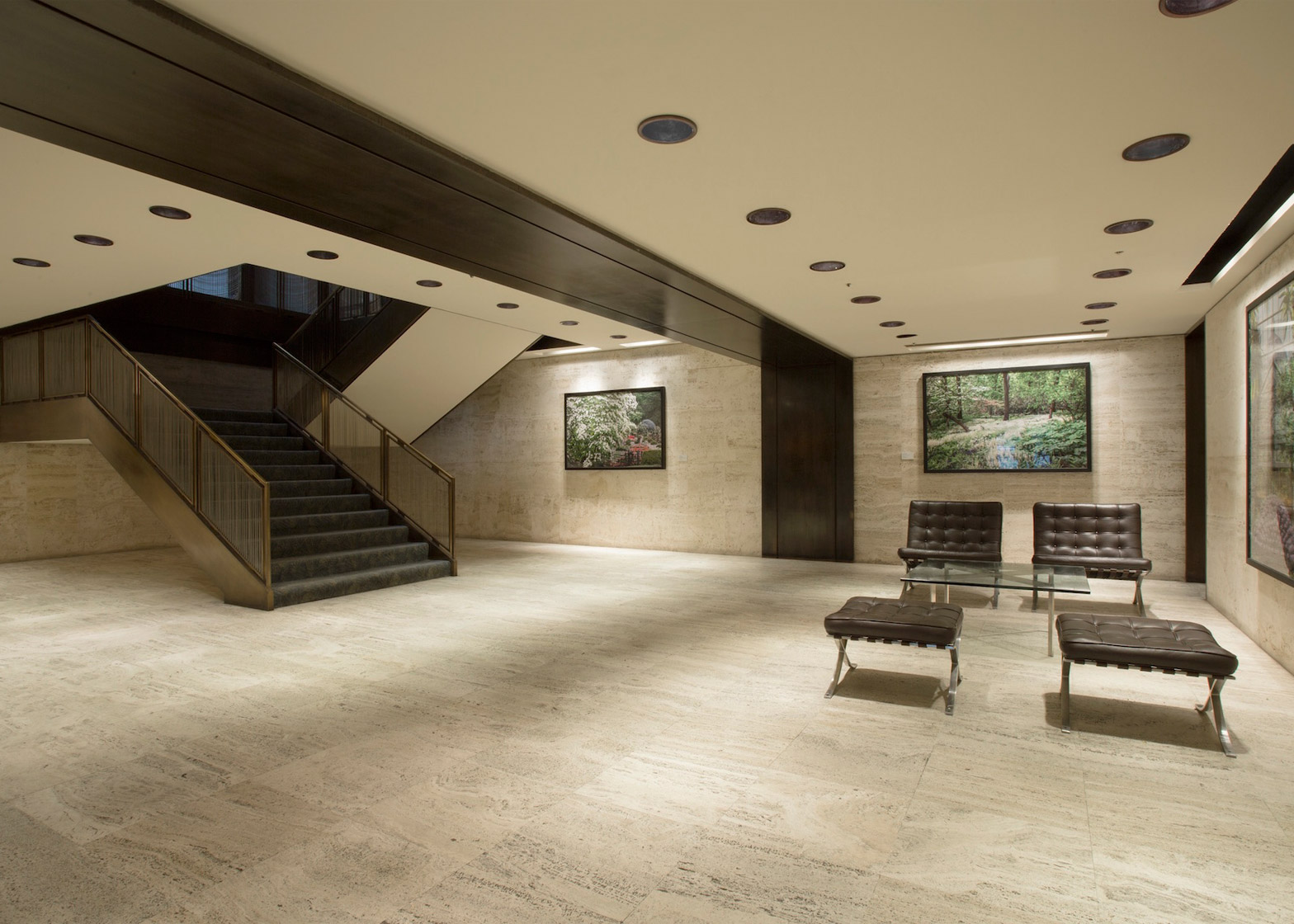Furniture, tableware and objects from the Philip Johnson-designed The Four Seasons restaurant in New York are to be auctioned off, marking the destruction of "one of the rarest phenomena in Modernism" according to US critics (+ slideshow).
Organised by US auction house Wright, the sale will take place on 26 July 2016 at the restaurant, located in Mies van der Rohe's Seagram Building on Park Avenue.
The auction will comprise approximately 500 lots, including works by van der Rohe and Danish designer Hans J Wegner, and made-to-order Knoll furniture. It will also include custom designs by the Pritzker Prize-winning American architect Johnson, who designed the restaurant in 1959.
Tableware and cookware designed by US industrial designer L Garth Huxtable and his partner, architecture writer Ada Louise Huxtable – a rare collaboration between the two – will also be up for grabs.
"To see the dispersal of the furnishings at an auction is painful," said Aaron Betsky, a leading US architecture critic and current dean of the Frank Lloyd Wright School of Architecture.
"For decades, The Four Seasons restaurant has been a space that provided one of the rarest phenomena in Modernism: a place where the architecture, the furniture, the table settings, the service, the food, and even the clientele was of a piece," he told Dezeen.
The Seagram Building's owner Aby Rosen announced that he did not plan to renew the lease for the restaurant in June 2015.
The restaurant's fixtures and fittings – such as the iconic bar, wooden wall panelling and beaded curtains – are listed, so Rosen is unable to renovate the space entirely. But this doesn't prevent Four Seasons owners Alex von Bidder and Julian Niccolini from the selling off the furniture, tableware and other items that were designed and chosen specifically for the restaurant.
"I'm so mad about this auction!" said critic Alexandra Lange. "To say that The Four Seasons space is 'preserved' with just the walls and those signature bead curtains is a sort of interior facadism, and a perversion of the idea of a landmark interior."
Architect and critic Phyllis Lambert, who first convinced her father Samuel Bronfman – the founder of Joseph E Seagram & Sons – to hire van der Rohe and Johnson for the building, has also written an open letter to Rosen pleading for him to keep the restaurant in tact.
"My plea is to keep in place the furniture designed by Mies van der Rohe and Philip Johnson, and therefore to maintain the authenticity of two of the world's greatest rooms," wrote Lambert.
She described the interiors as an example of gesamtkunstwerk – a complete work of art that includes every aspect of the interior and exterior.
Belmont Freeman, the architect behind the 2008 renovation of The Four Seasons, has also spoken out against the auction.
"It makes me sick," he said in an interview with Metropolis magazine. "There are some interiors that are such fully integrated works of art that their integrity, their significance, depends on all elements of the design, including 'portable' furniture and accessories."
The Four Seasons is the latest loss in a string of iconic New York restaurants that were designed in the Modernist style "right down to the last salt cellar".
Others include American designer Alexander Girard's 1960 La Fonda del Sol in the Time & Life Building, which closed after a decade, while his 1966 L'Etoile at the Sherry Netherlands Hotel shut abruptly more recently and became an American Airlines ticket office.
Finnish American architect Eero Saarinen's 1966 Ground Floor Restaurant at his CBS Building – designed as a counterpoint to The Four Seasons but never as successful – was taken over by China Grill in 1987.
The Windows on the World complex at the top of the World Trade Center's North Tower, by American architect Warren Platner, was also lost in the 9/11 terrorist attacks.
"The auction upsets me because The Four Seasons was part of a whole range of iconic architect-designed restaurants of the 1960s and 1970s that have now disappeared," Lange told Dezeen.
"The Four Seasons and Roche Dinkeloo's Ambassador Grill (also threatened) were it, and now we are down to one."
The importance of these holistically designed restaurants lay in the fact that they remained largely unchanged since opening 40 or 50 years ago.
"The owners have pointed out that a restaurant is not a museum, but maybe it should have been a living monument to a certain kind of experience," Betsky said.
"Ironically, I am not sure how important or interesting the furnishings are outside of their relationship to each other," he continued. "A Barcelona Chair is something you can obtain readily, even if it will not have the same provenance, while the cutlery will not look particularly elegant in another setting."
Estimates for the larger furniture pieces, which include Bronze Tulip tables by Eero Saarinen and custom banquettes by Johnson, range from $1,000 (£700) to $5,000 (£3,520). Smaller items like the Huxtables' serving bowls start at $500 (£350).
"I hope some museum buys a suite so they can reconstruct, say, Philip Johnson's banquette at lunchtime for some future show on these restaurants," said Lange.
Johnson, who died in 2005, was recently outed as an impassioned supporter of Nazism. He is best known for his Modernist Glass House in Connecticut, which has recently hosted installations by Fujiko Nakaya and Yayoi Kusama – and the Postmodern AT&T tower in Manhattan.
Photography courtesy of Wright.

